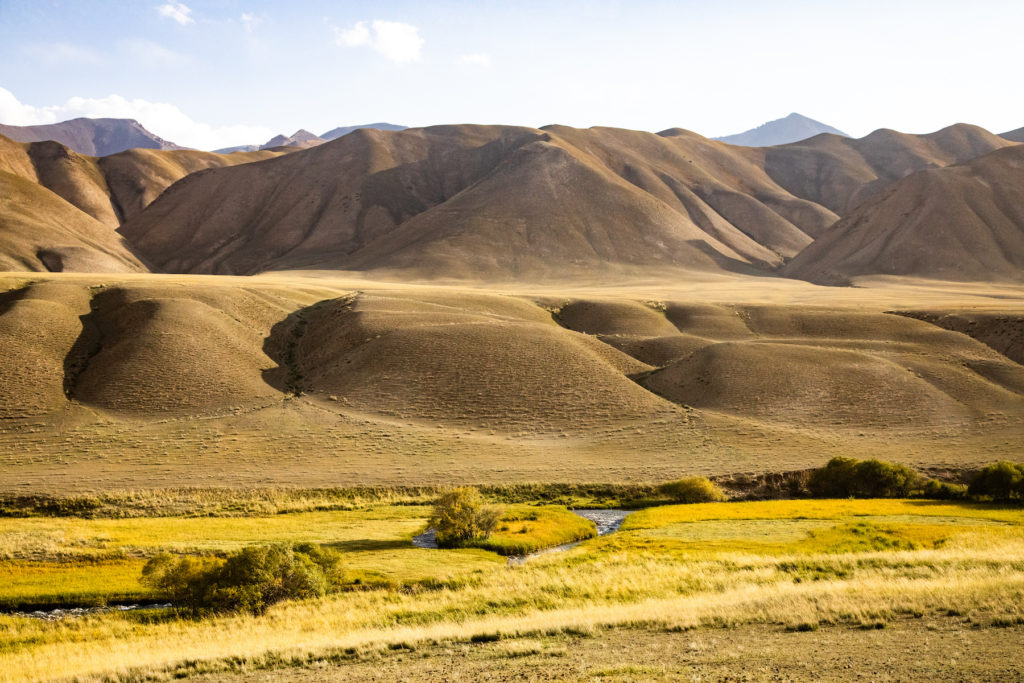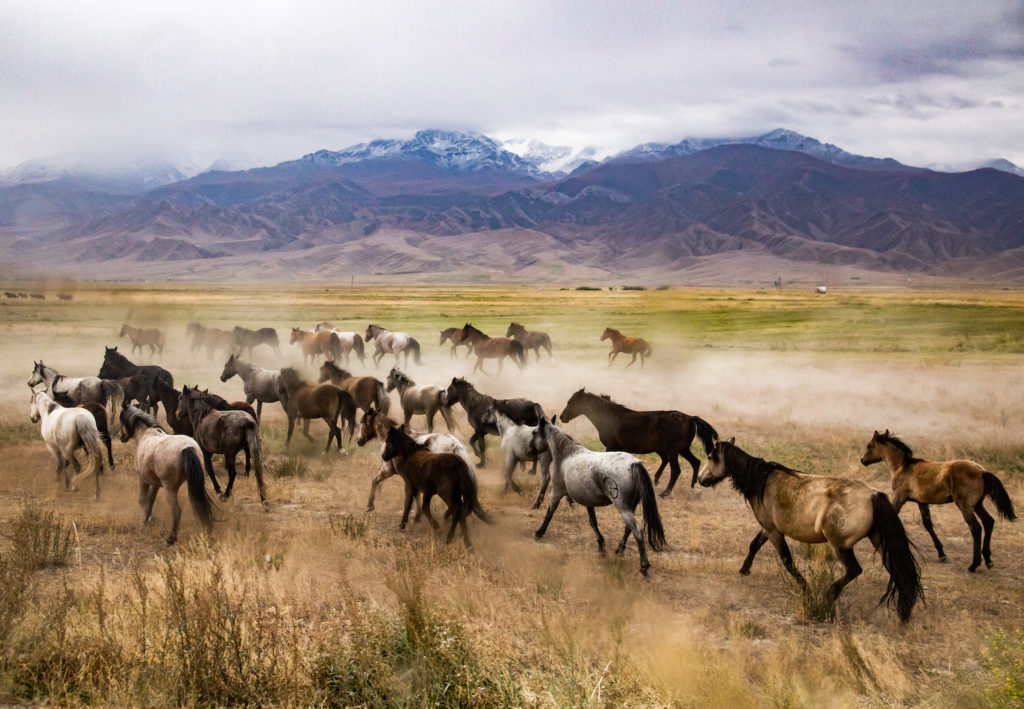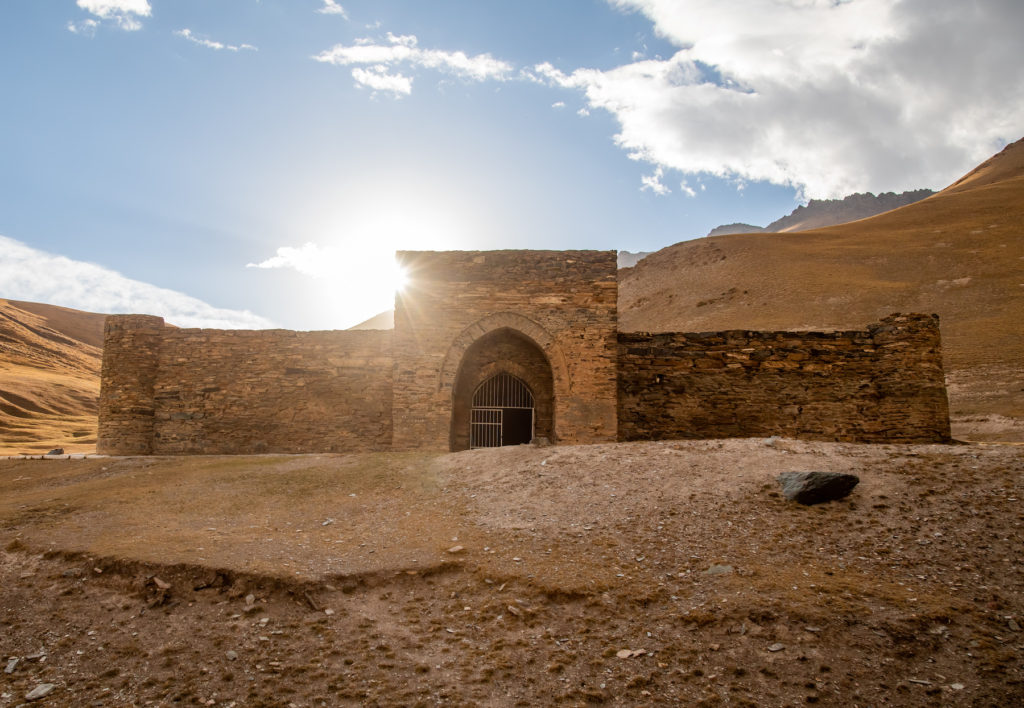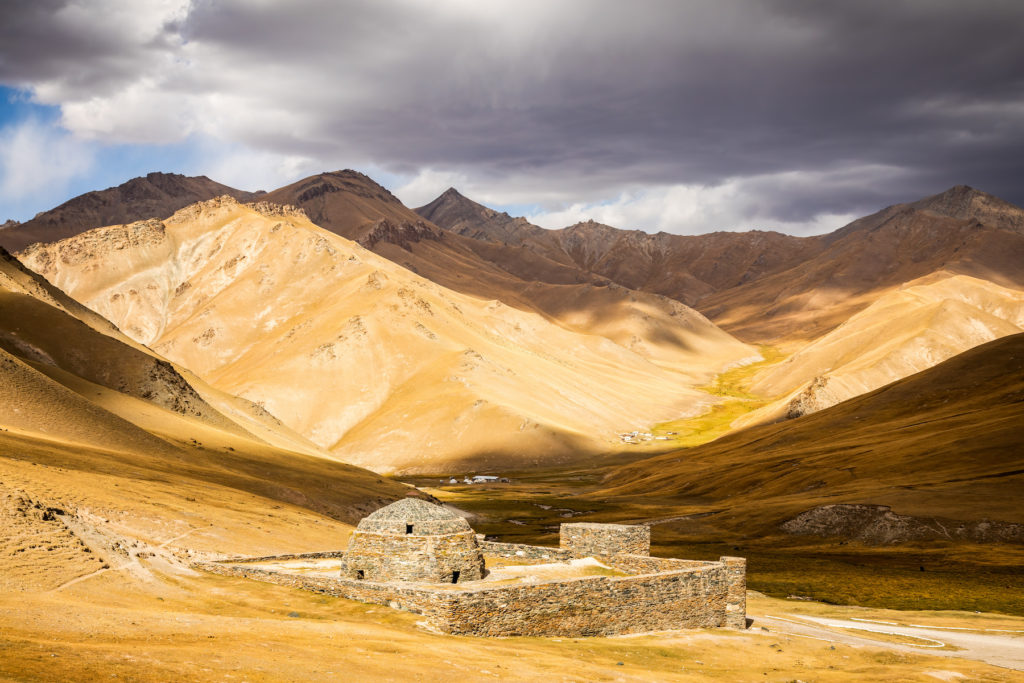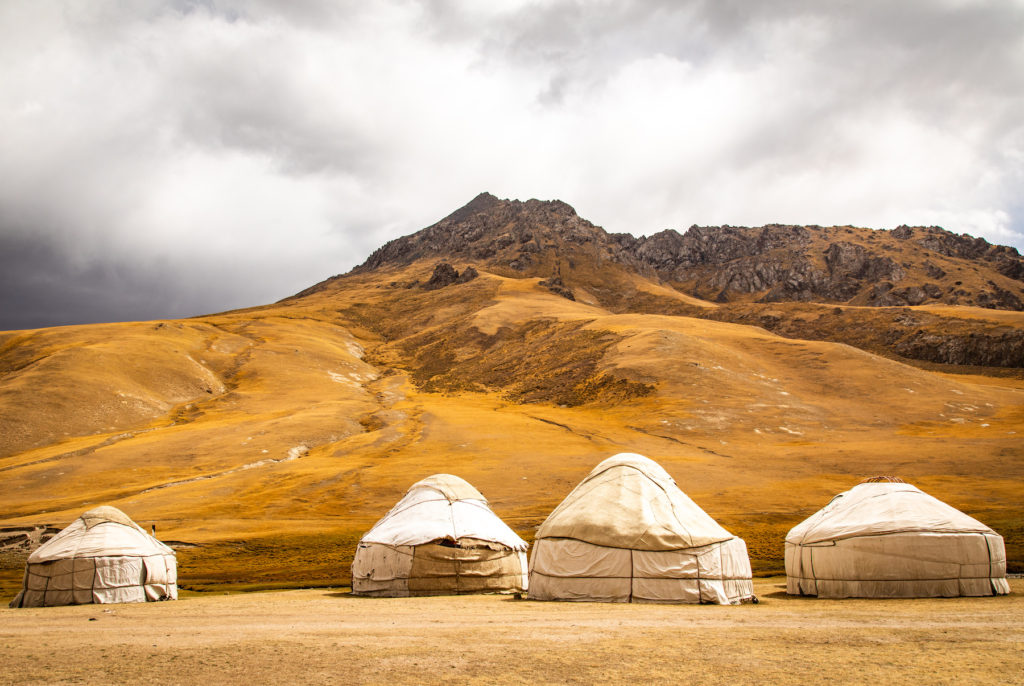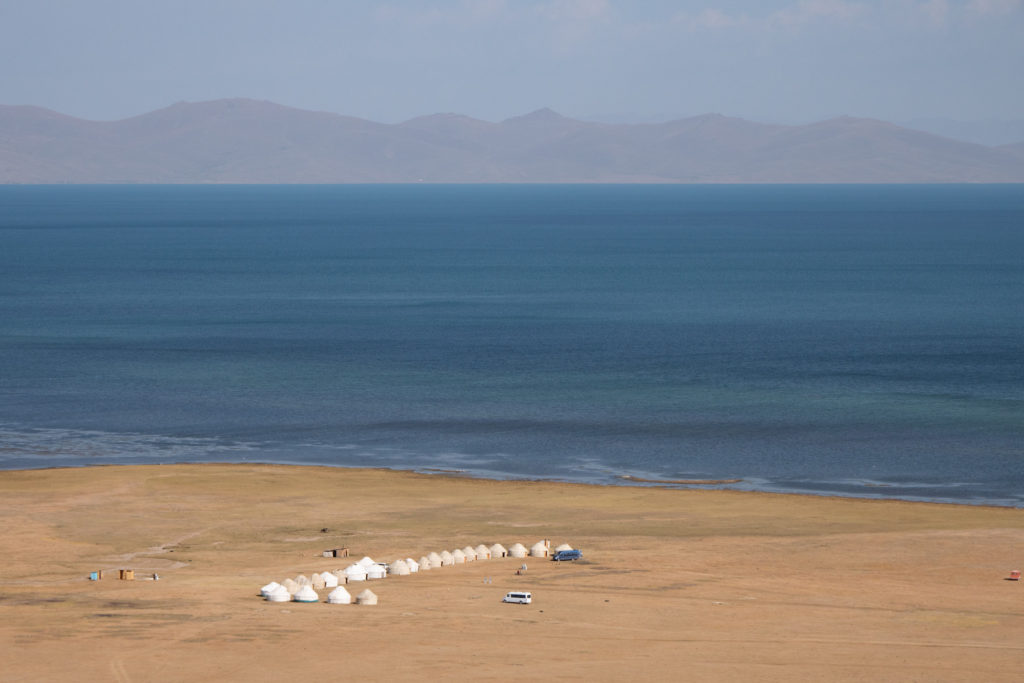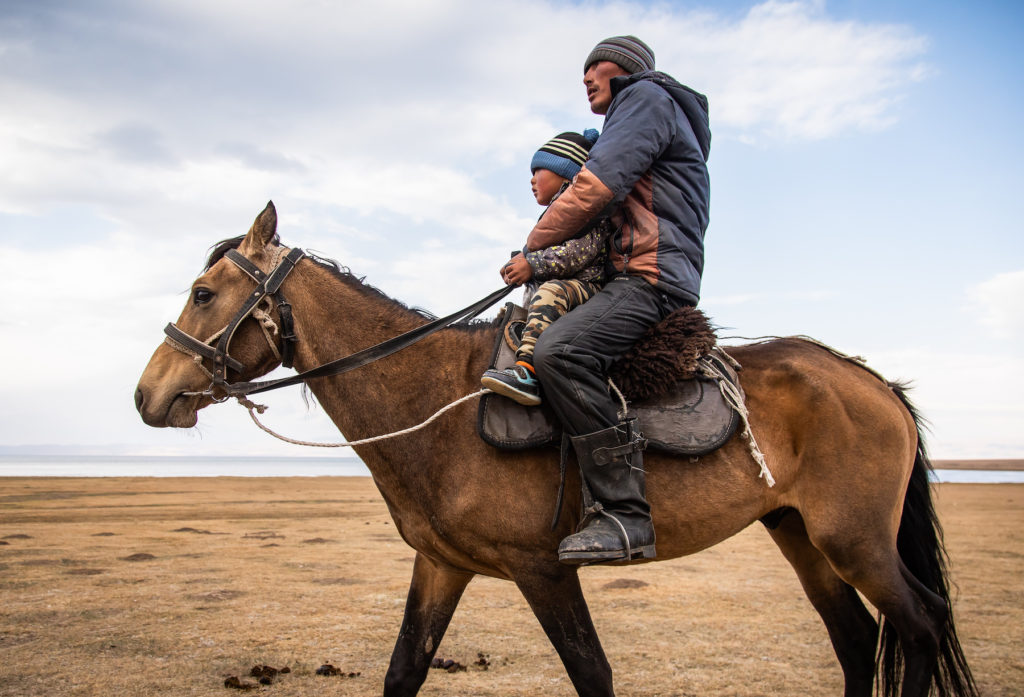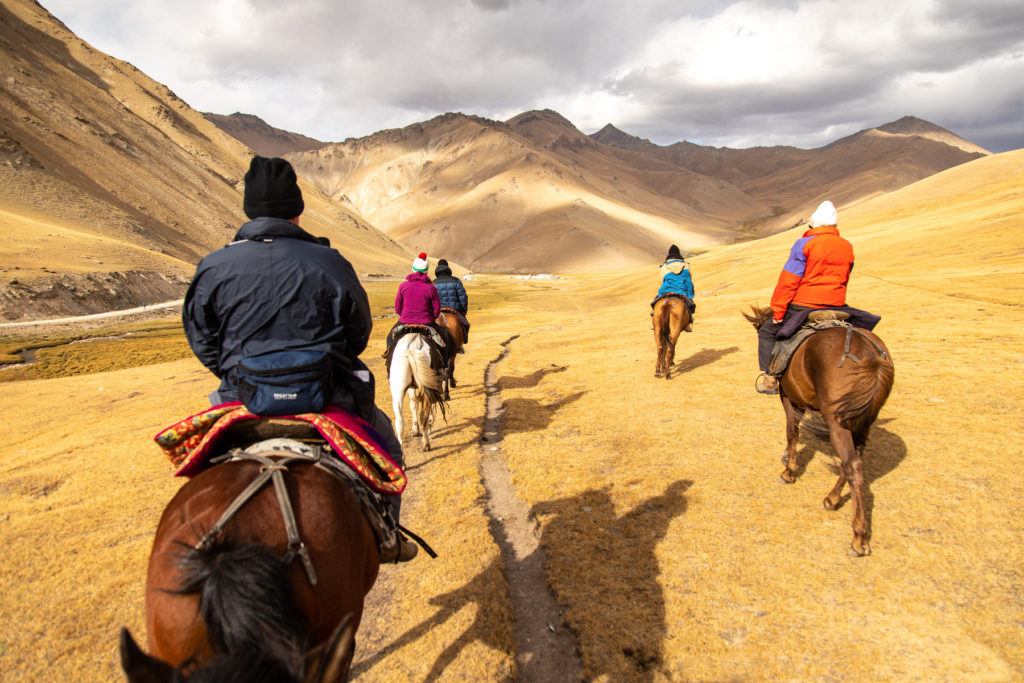The plain stretches out below the purple mountains, as a herd of horses run and scatter yellow dust up into the dull green grasses. There is a sense of silence to the valleys, a huge openness of space and of a movement of light across the landscape that tricks you into thinking that the very wind or sky is alive.
A bright freshness, a crispness of air, where colours seem more bold, more contrasting, more fluid. The light changes the very mood or shape of a valley, from soft to harsh and back again. This wildness is emotional and the weather changeable in an instant.
This is Kyrgyzstan. A land of mountains, myths, nomads and poetry (plus as many consonants as possible in a name). This landlocked Central Asian country has the Tian Shan mountain range covering well over 80% of its land mass. Its sharp peaks and soft green valley landscapes filter into the imagination, making the Silk Road history more tangible.
Many different empires and cultures have crossed, fought and lived in these hills, the most recent being the Soviet Union. The Kyrgyz Republic, its official name, has been independent since 1991.
Silk Road Heritage
It’s easy to imagine ghosts in Tash Rabat… isolation makes it a place where the wind whispers stories that cling to the old stone walls. Its history is unsure; most concur that it is a 15th-century caravanserai that gave shelter to riders and travellers along the Silk Road.
But in the late 1880s and then almost hundred years later, in the 1990s it was decided that it could have been a Nestorian monastery (due to its structure) dating back from the 10th century, although no Christian objects have ever been found on site. There is also evidence that it was built by Mohammad Khan, a ruler of Mogulistan (after the collapse of Genghis Khan’s empire).
Whatever its heritage it must have been a site to behold in days gone by when any travellers came though the valley – they must have breathed a sigh of relief to see the half-sunken rectangular building alone in the elements, a place of refuge on this long road.
You could imagine tales passing from the lips of one traveller to the ears of the others in the dark of night, shafts of firelight hitting stones and walls, casting images. Today the sunlight works its way through windows and doorways, highlighting sections of a room, giving a surreal quality that old derelict buildings often have – a sense of not wanting to be forgotten.
Out in a field 80km from Bishkek is the Lost City of Balasagun, another incredibly important site during the times of the Silk Route. Founded in the 10th century by the Karakhanids, or Black Khans, it was the capital of an Empire that stretched from China to the Aral Sea.
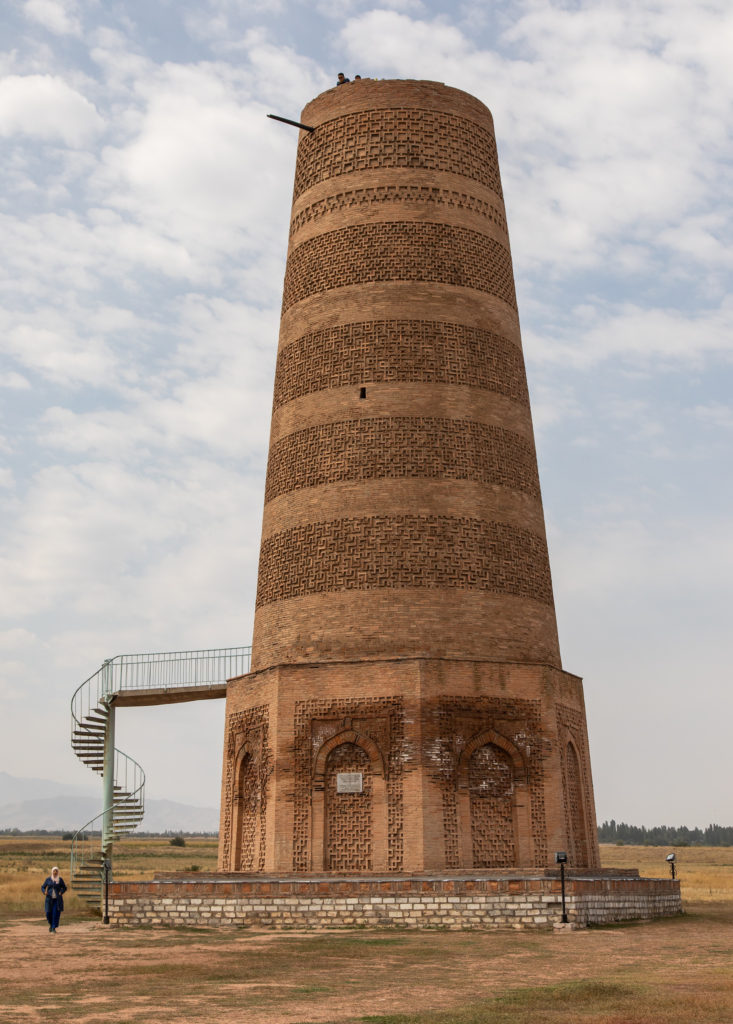
Today, only the lonely Burana Tower remains, 25m tall, like a lighthouse without a sea. This minaret was once 40m high but was destroyed by the Mongols and helped along the road to ruin by an earthquake. Now it stands watch over an army of balbals: gravestones of nomadic Turkic tribes, rounded and with carvings of faces, varying in height from half a metre to as tall as 4m.
Each balbal was kept with the nomadic tribe for a year as the dead person’s spirit was still believed to be living within it. Then they were left with the others, all facing east – the tribe’s shamans worshipped the sky and each new day, each new beginning begins in the east. Every stone has a different face and a different personality, a history of its own. Some smile, some seem sorrowful, others quizzical.
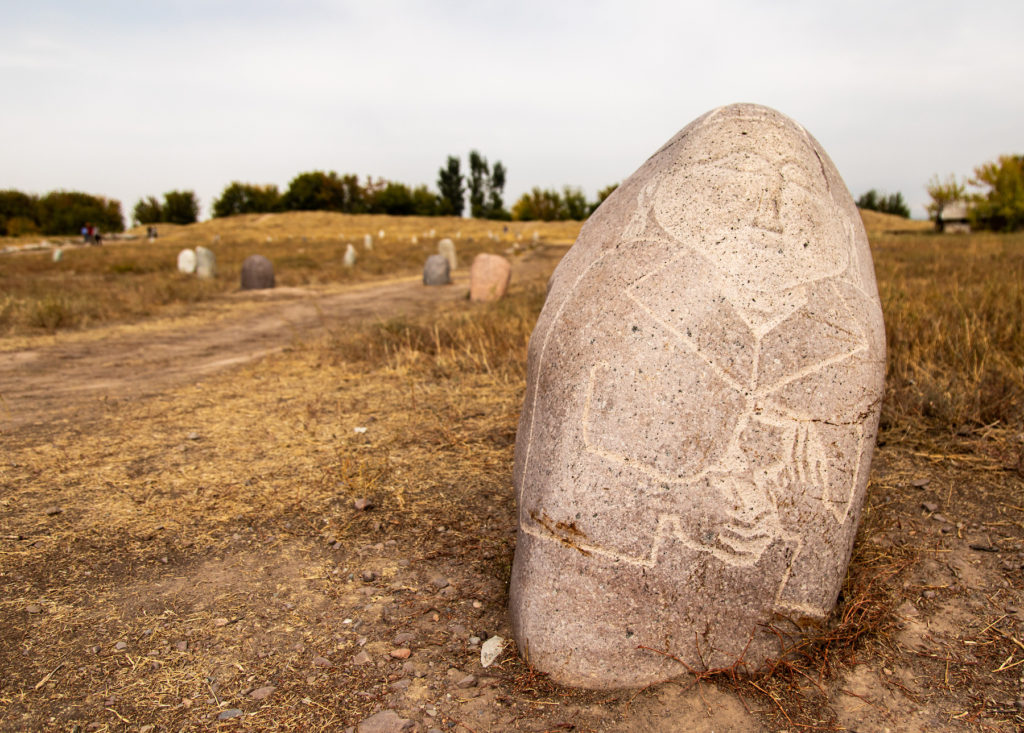
The carvings show wonderful moustaches and raised eyebrows, as if thinking of a past war story to tell. Most are holding an item, usually a dish, so that they can eat in their next life. Others hold a wine goblet, and these could be Nestorian. I think the Christians might be having more fun in the afterlife! And then some hold a sword to show that they are fighters. A silent party by a lonely tower of history.
During Stalin’s early years in powers, his collectivisation policy forced nomadic tribes into settlements and demanded that they hand over their animals. Not surprisingly, the nomads chose to slaughter their own livestock than give them to the government.
The traditional Kyrgyz still prefer being out in the wilds with their yak, sheep and horses. Although the old ways of migration to the jailoo (summer) pastures is not as common today, livestock is still seen as a commodity. Tourism is also a profitable way to keep their culture alive with yurt home stays and riding treks offered to visitors.
A land of nomads
Although suppressed during the Soviet era, nomadic traditions have seen a resurgence in recent years. One such tradition is the national sport of kok-boru, which literally translates as ‘blue wolf’ but is more commonly known as dead goat polo.
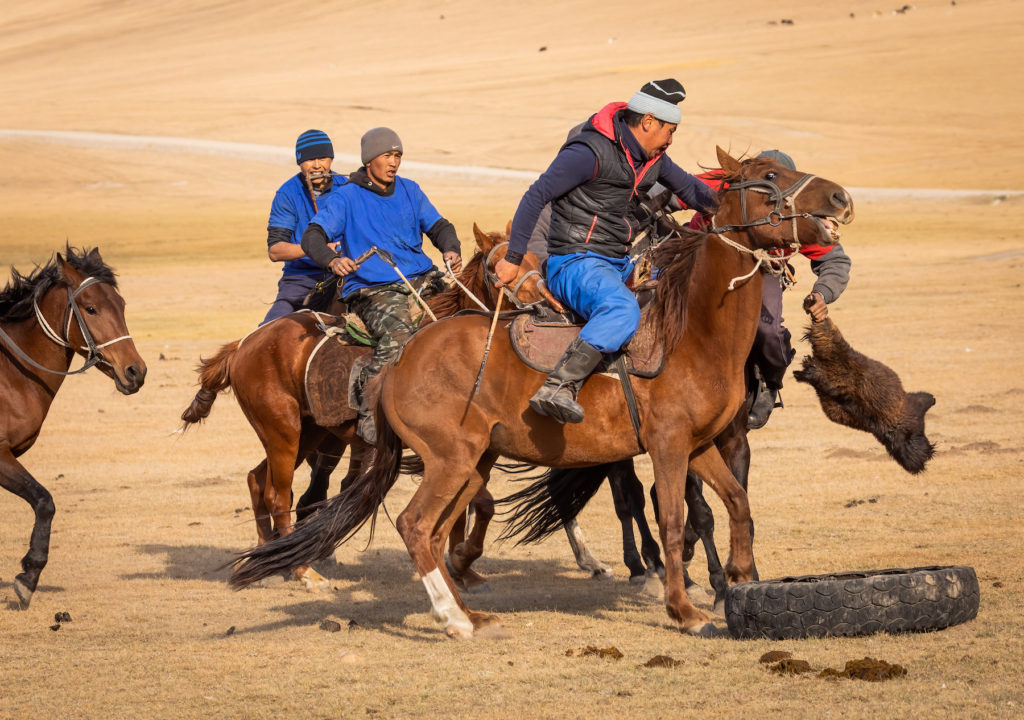
Two teams of riders try to grab the goat (minus the head) and drop it into a goal, which is like a raised pit. Originally played between shepherds as a way to prove their prowess, it is a game of great skill and horsemanship with lots of legs, dust and grabbing in play. Players circle round each other and do a type of rugby scrum on horseback.
The Kyrgyz are proud of their horses, known to be small but calm and well-tempered. Children are encouraged to ride as soon as they can sit straight. Riders love to show off their skills; one particularly impressive trick is for a rider to gallop at full speed and then reach down and pick up a paper note, stretching down the flank of their horse and snatching up the money.
Joy and wonder in equal measure as the rider thunders by. There is an idiom: ‘Horses are the Kyrgyz’s wings’, and this could well be true once you see them rush past you.
The Kyrgyz love their bread, and each bakery, market or region will have its own design. Lepyosha, an earthy bagel type bread,is the most common one seen in the markets; its disc shape stacked or displaying its various patterns. But with so many different types of bread available you are bound to taste some at every meal.
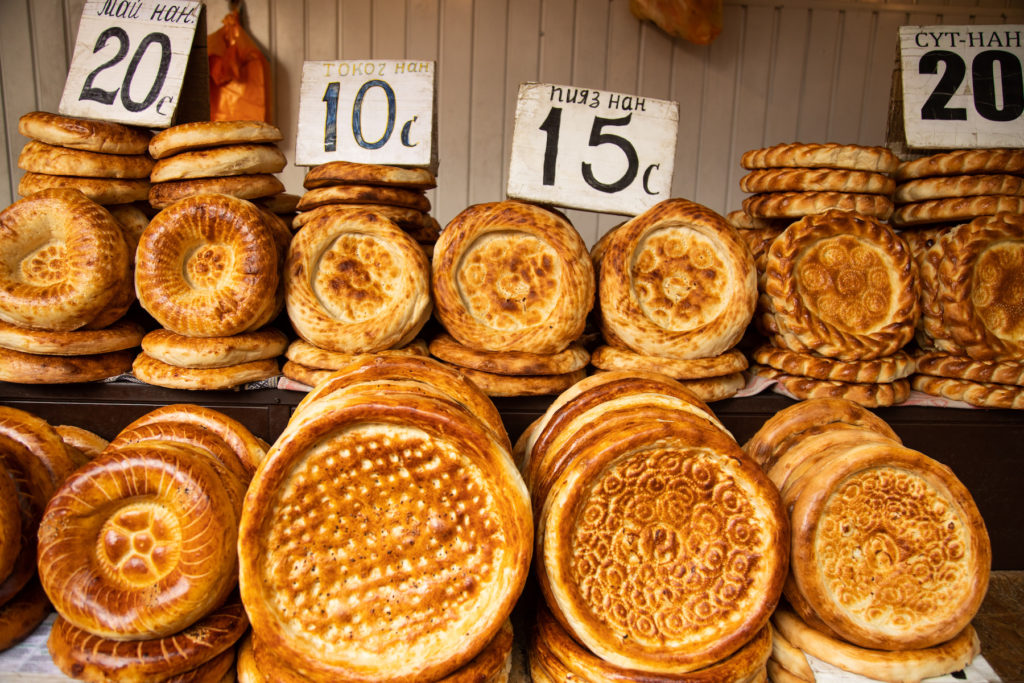
Just as sacred as their bread is their hats. These domed white-felt hats are known as kalpaks and are now recognised by UNESCO as part of Kyrgyzstan’s cultural heritage, being present in their identity since the days of Tamerlane. Each hat symbolises a white snow-capped Tien Shan mountain with a darker base, and the four sides illustrate the four elements of air, water, fire and earth connecting to north, east, south and west.
Stitching along the edges have intersections that represent the sun and life, and the tassel on the right side shows posterity and prosperity. The pattern and design illustrate which tribe you belong to and what your rank and status is in life; a leader will have a higher hat, for example.
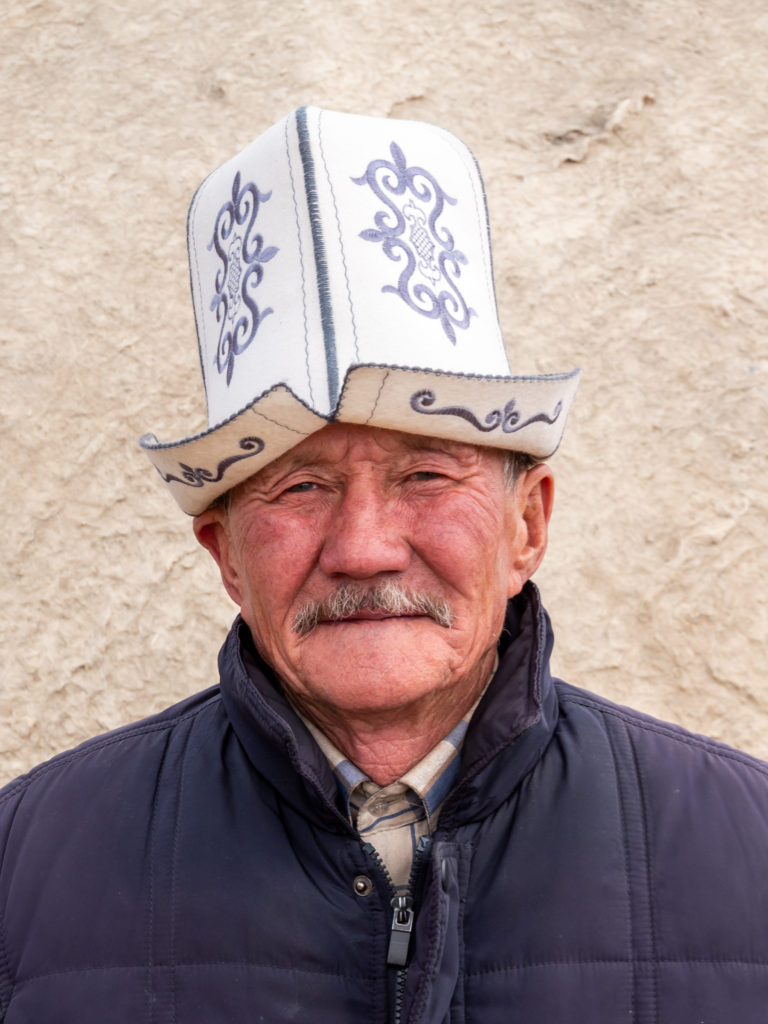
Designs on children’s hats show a mother’s protection; green is the colour of youth from 12, until 24 when the hat trimming change to blue, then brown at 36, beige at 48 and finally black at 60. If a man wants to show he is interested in getting married, he must put red decorations on his hat, while pure white kalpaks are for leaders to show they are just. There is great respect for the kalpak – they should never be placed on the ground or thrown into the air.
Born in Northern Ireland, Kirsten Hamilton-Sturdy spent most of her childhood years in other countries, including Nigeria, Libya and Bangladesh. She’s since been to 70 countries and has spent 14 years teaching overseas, dragging her own children around with her. She enjoys writing about her travels, and has been runner up in our New Travel Writer of the Year Competition on four separate occasions.
You can follow Bharat Patel on Instagram or visit his website to stay tuned on his latest exhibitions and books.
